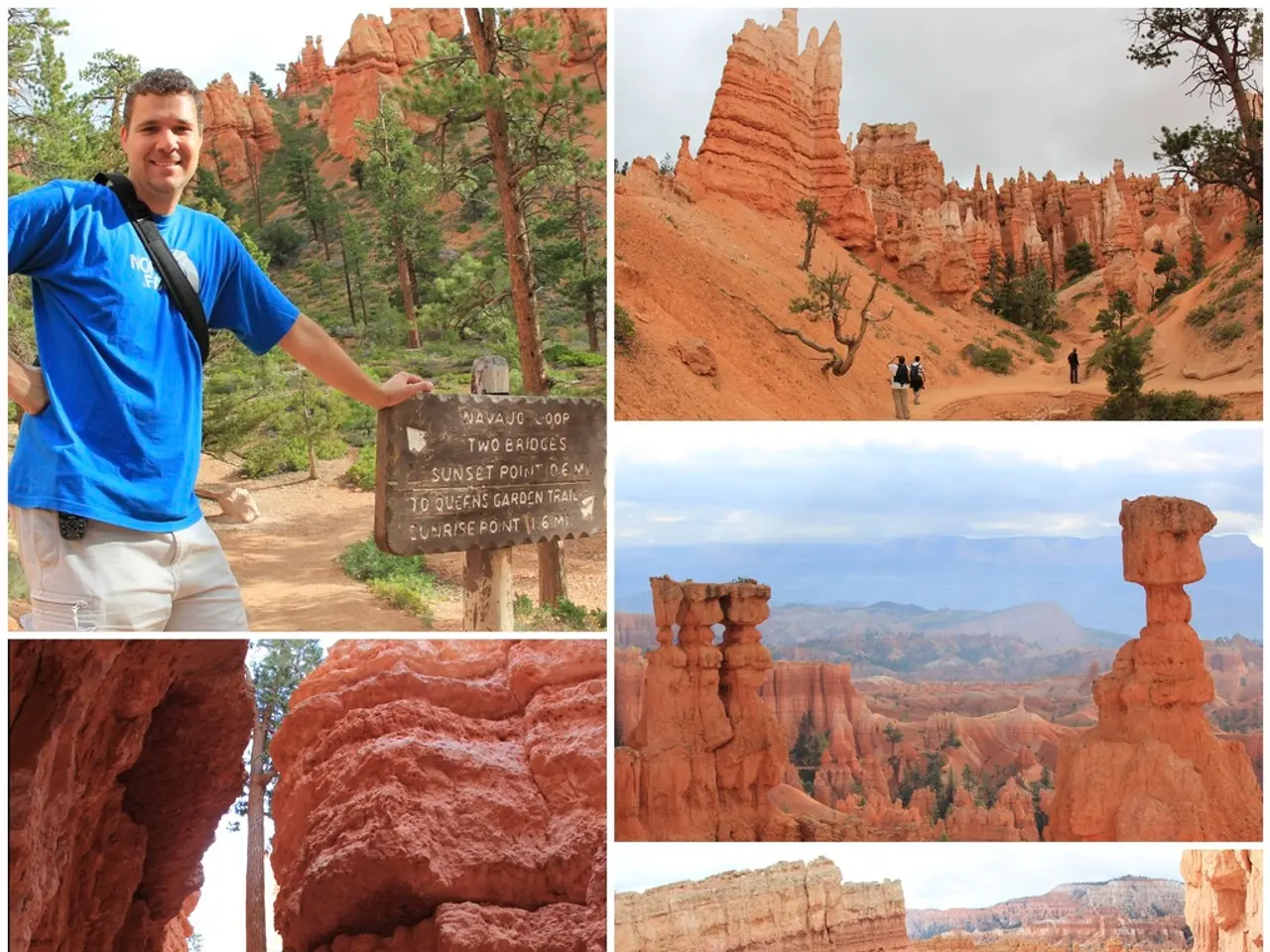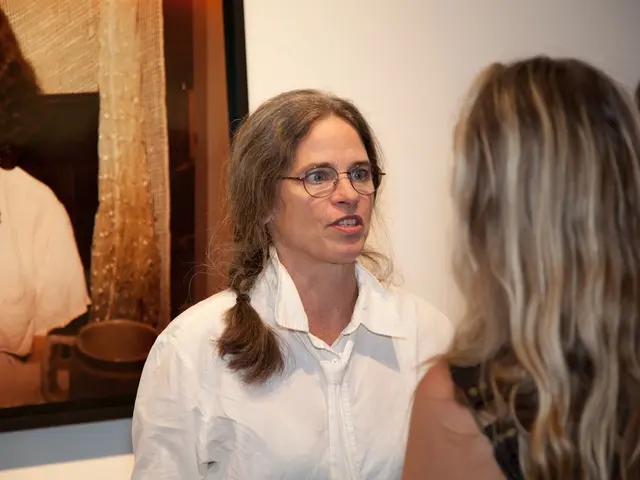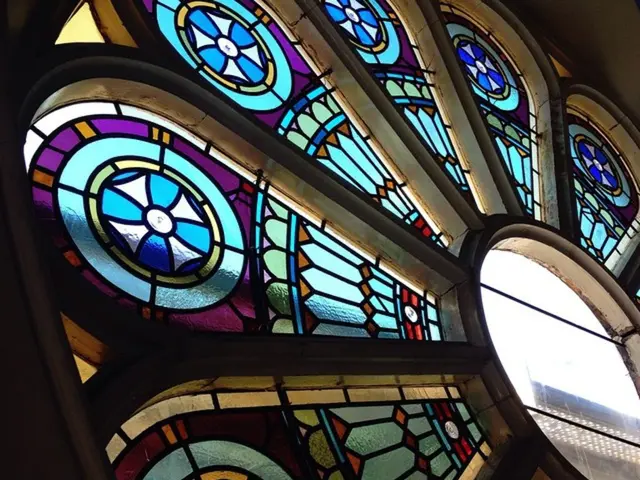Ancient structures from the Bronze Age found on Oileáin Ácla, County Mayo
In the picturesque landscape of Co. Mayo, Ireland, a significant archaeological discovery was made during an academic field trip. A group of students from the University of Notre Dame in Indiana, along with their professors, stumbled upon a rare Bronze Age stone alignment known as An Chloch Mhór.
The site, which consists of two standing stones and a fallen one nearby, is believed to be an ancient portal and a territorial mark or boundary stone. The largest stone, over 2.4 meters tall, may have given its name to the townland, An Cloch Mor.
Penelope Carlin, a student from Austin, Texas, was drawn to Ireland for its hikes, nature, and ruins, as such sites are rare in her home state. She found the discovery thrilling, as did her fellow students, most of whom had never been to Ireland before. Blake Bluthardt, a student from Detroit in Michigan, found the nature and ruins of Ireland exciting and different from what he knew in Detroit. Andrea Jasso, a student from Brownsville, Texas, was equally captivated by the rich history and stories of the Irish land.
The stone alignment, aligned North-South, may have astronomical significance, adding to its historical importance. It is also associated with prehistoric times and early farming, specifically the Neolithic era. The site may have marked burial locations with 3,000-year-old cremation burials contained within pottery vessels buried beneath the stones.
Michael Gibbons, an archaeologist involved in the discovery, has been instrumental in uncovering significant historical sites in Conamara and on Oilean Acla. He was joined by an unnamed speaker in this latest find. Seán O Coisdealbha, a poet and historian from An Spideal in Co Galway, was not directly mentioned in relation to the discovery.
The location of the interview was near Kildavnet, a medieval monastic settlement, and Kildavnet Castle, known as Grainne Mhaol's Tower. The students are currently spending their semester at the University of Galway and Kylemore Abbey.
Oilean Acla, rich in prehistoric monuments and forts, now boasts this unique Bronze Age site overlooking Clew Bay. The discovery of An Chloch Mhór adds another fascinating chapter to Ireland's ancient history, offering a glimpse into the lives of those who lived here thousands of years ago.
Read also:
- Leading Human Resources Leaders Poised to Assume Roles of Cultural Advocates, Guardians of Evolution, and Data Analysis Experts
- Dispute on hunger crisis in Gaza intensifies amongst numerous Jewish-American citizens
- Lucrative Business Opportunities in Nigeria: Discover Profitable Enterprises Immediately
- Carpometacarpal joint osteoarthritis: Characteristics, origins, remedies




